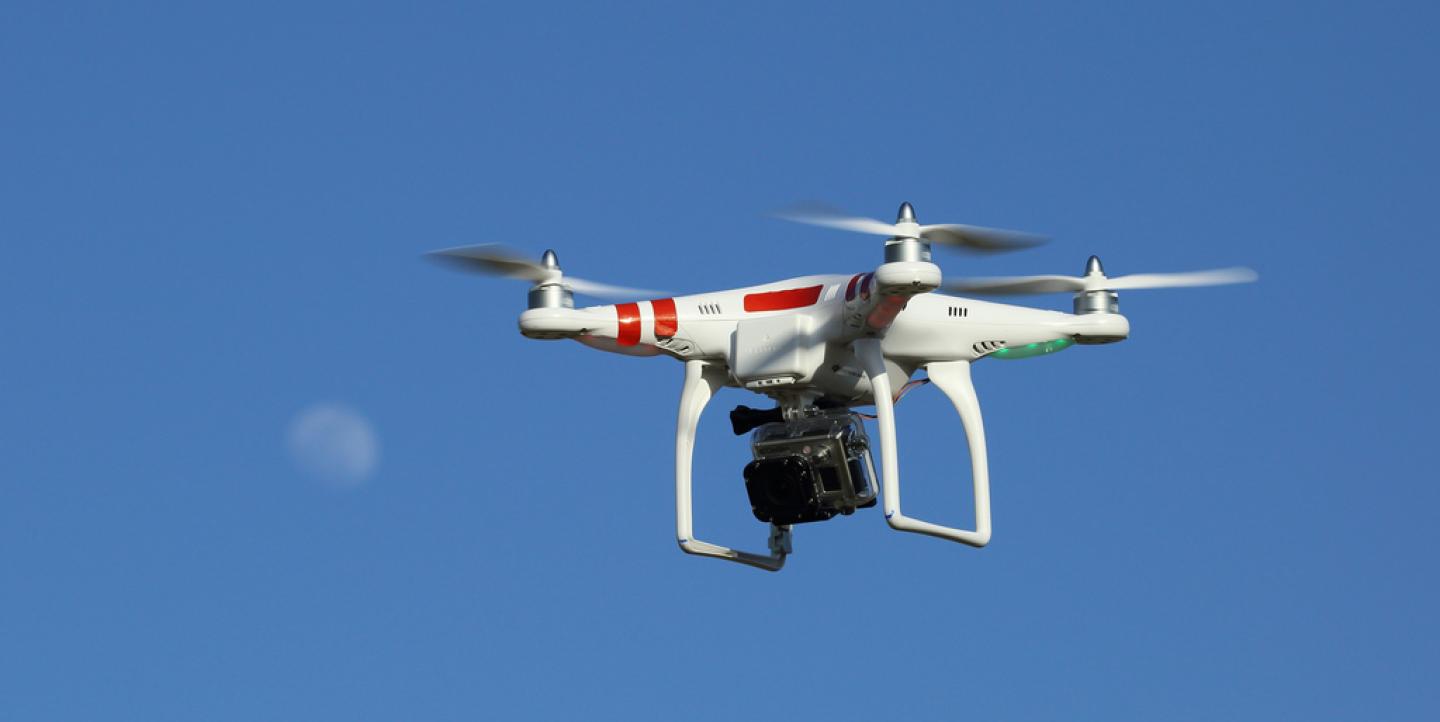Updated April 23, at 11:45 a.m. Eastern.
Kenyan digital journalist Dickens Onditi Olewe wants to help journalists across Africa improve their coverage of hard-to-reach places by giving them an “eye in the sky” aerial view.
But instead of expensive helicopters, he’s interested in low-cost drone technology, which he says has the potential to revolutionize media access to frontline events and stories in remote areas.
Last year, Olewe founded AfricanSkyCAM, Africa’s first drone journalism team, to use unmanned aerial vehicles (UAVs) and camera-equipped balloons to give journalists an added perspective in storytelling. Based in Nairobi, AfricanSkyCAM is in the process of expanding across the continent.
“Africa is a massive continent with vast numbers of its one billion people still living in isolated rural areas,” Olewe told IJNet. “Just think how useful drones can be here.”
AfricanSkyCAM was one of 20 winners of the 2012 African News Innovation Challenge (ANIC). The competition encourages experimentation in digital technologies and supports the best innovations designed to strengthen African news organizations.
The contest, modeled on the Knight News Challenge, was launched by the African Media Initiative under the leadership of ICFJ Knight International Journalism Fellow Justin Arenstein.
The concept for AfricanSkyCAM was born when Olewe, a journalist with The Star Newspaper in Nairobi, was working on a piece about flooding at Lake Nakuru National Park. He had helped build a mobile-based citizen reporting app to crowdsource photos and video of the floods, but realized that an aerial view would give the story a much richer perspective.
A few months later, AfricanSkyCAM's first project documented flooding at the park.
“We have floods in this country pretty much always, and journalists often go out with random fisherman on a boat, risking their equipment and shooting at eye level, which doesn’t give you scale of the floods,” he says. “So I thought having an ‘eye in the sky’ would be much better.”
The project's early successes at reporting floods has sparked interest from media elsewhere on the continent, with requests from newsrooms in Nigeria and South Africa who want to host their own drone teams. The growing interest has prompted Olewe to establish a continental association, africanDRONE, to help both media and other users access the training, equipment, and technical support they would need to be effective.
Drone technology has been used by media across the world, including by CNN in the United States, BBC in the United Kingdown and Australia’s ABC. Unlike those countries, Kenya has few laws restricting the flight of remote-controlled planes. But this freedom isn't a boon for drone journalism, Olewe says.
“The fact that we don’t have a law means anyone can buy and use the technology, which creates a very big problem,” Olewe said. Authorities can harass or stop operators, and anyone without training can operate "equipment which can cause injury and death" if misused.
On March 7, Kenyan newspapers published a picture of a civilian drone that crashed on a farm, causing panic among locals. The Star newspaper published the picture of the UAV on the front page with the headline: “Mysterious flying object drops in Naivasha.”
To help the Kenya public get used to the technology, Olewe is partnering with conservationists, emergency services personnel and journalists to “carve a softer image for drones” by adopting the equipment in their work and participating in experiments.
“We actually are bringing this equipment to the public space, and getting people comfortable with it,” he says. “My strategy is to show that other sectors can use drones and are using them for business.”
Last month, AfricanSkyCAM partnered with Ben Kreimer from the Drone Journalism Lab at the University of Nebraska. Using a DJI phantom quadcopter, they covered a rally at Machakos People’s Park, produced a promotional video for the Paradise Lost recreation park in Kiambu County and partnered with CCTV Africa to film the Ol Pejeta conservancy and its animals.
Future applications could include monitoring poaching of endangered species and covering violent clashes, Olewe said.
AfricanSkyCAM's next step is to partner with like-minded media across the region to share knowledge and experience, and to help kickstart the adoption of low-cost drone technology in storytelling.
Olewe is also creating a best-practices manual, and he'll spend the 2014-2015 academic year as a John S. Knight International Journalism Fellow, developing ideas for an African drone journalism corps.
Jessica Weiss, a former IJNet managing editor, is a Bogotá-based freelance journalist.
Global media innovation content related to the projects and partners of the ICFJ Knight International Journalism Fellows on IJNet is supported by the John S. and James L. Knight Foundation and edited by Jennifer Dorroh.
Image courtesy of Flickr user Don McCullough under a Creative Commons license.

